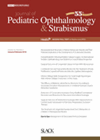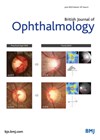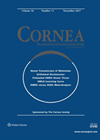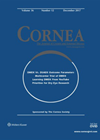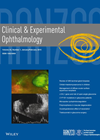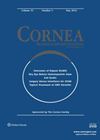You searched for "stromal"
Changes in the choroid after atropine for amblyopic and fellow eyes
The purpose of this study was to compare the effects of atropine on the thickness and structure of the choroid between amblyopic and fellow eyes. This study included 16 patients: five males, 11 females. Median age at ocular coherence tomography...Multidrug-resistant keratitis: challenging yet manageable
This is a retrospective review of all patients’ records from a tertiary referral centre in India from January 2018 to December 2019, who had corneal scrapings for direct smear and culture sensitivity. Those cases where the organisms were diagnosed to...A step-by-step approach to the diagnosis and management of Sands of Sahara Syndrome
1 October 2018
| Hani Hasan, Guy Smith
|
EYE - Cornea, EYE - Cataract, EYE - Refractive, EYE - General
Sands of Sahara syndrome (diffuse lamellar keratitis) is a rare postoperative complication of Laser in situ keratomileusis (LASIK). Its estimated prevalence is reported to be 2-4% among LASIK cases [1], despite that, it is more likely to be encountered by...
Resurfacing the ocular surface
1 April 2016
| Harminder Dua (Prof)
|
EYE - Cornea
The ocular surface (OS) is an anatomical and functional unit made of the tear film, the conjunctival, limbal and corneal epithelium, the lacrimal, mucous and meibomian glands and the lids and blink reflex. The tear film is composed of a...
DMEK versus DSAEK
This systematic review and meta-analysis reviewed published evidence comparing two endothelial corneal transplants techniques; Descemet membrane endothelial keratoplasty (DMEK) and Descemet stripping automated endothelial keratoplasty (DSEAK). DMEK involves transplanting Descemet membrane with endothelial cells without any overlying stroma. In DSAEK...Fusarium keratitis in a patient with alcohol dependence
1 April 2014
| Inderpaul S Sian, Jonathan Park, Keith Bates
|
EYE - Cornea, EYE - Imaging, EYE - General
Treatment of fungal keratitis secondary to the Fusarium species remains a challenge. Although relatively more common in warmer climates, this corneal infection is rare in the UK. Most cases have been reported in farmers and are often preceded by trauma....
Apr/May 2017 Quiz
History A five-month-old baby was seen in clinic with bilateral congenital corneal opacities. The right cornea is shown in Figure 1. Figure 1. Examination revealed corneal oedema and opacities of Descemet’s membrane and endothelium with a few vesicular lesions. Corneal...Quiz Dec/Jan 2023
1 December 2022
| Christopher Bell, Elizabeth James
|
EYE - General
History A 35-year-old female presented to the emergency eye clinic with an acutely red, painful, photophobic left eye. She was a contact lens-wearer but denied swimming, showering, or sleeping in her lenses. She resided on a farm and worked as...
Corneal Collagen Cross-Linking
1 June 2016
| Shirley Hancock
|
EYE - Cornea
As the title suggests, this publication provides a single volume that collates much of the current knowledge and application for corneal collage cross-linking (CXL). There are 23 chapters, subdivided into seven sections, including five pages of indices. The chapters are...

